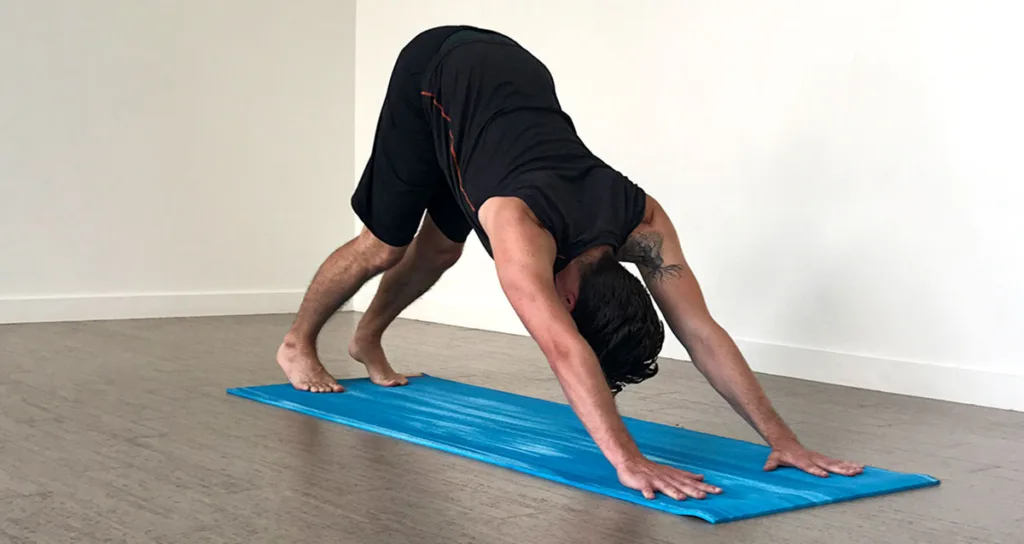
In the age of social media, yoga pose photos can inspire and/or intimidate. Instagram is chock full of picture-perfect fancy yoga poses. Looking at yoga pose photos is one way to set intentions in your practice. It can be helpful to observe how others practice. But photos have one major limitation: they’re static depictions of living, breathing forms. But yoga is not a static practice. Asana is a verb.
What Does It Mean to Pose?
Part of the reason we often misinterpret asana as a static form could be a matter of semantics. Most of us use the word “pose” to describe asana. The Oxford Dictionary’s first definition of the noun form of “pose” is this: “a particular way of standing or sitting, usually adopted for effect or in order to be photographed, painted, or drawn.” This sounds an awful lot like what we do when we pose for a prospective audience on social media.
The verb definitions are equally problematic. According to Merriam Webster, the first two are: “1. : to assume a posture or attitude usually for artistic purposes. 2. : to affect an attitude or character usually to deceive or impress. posed as a doctor to gain access to the ward.” Yikes!
This is why I’ve tried—with limited success—to change my habit of using the word “pose.” Old habits die hard, but I do feel that the word “asana” is finding its way into my yoga instruction more often than it used to. The reason I feel this is important is that most people don’t come to yoga practice with a preconceived idea of what asana means. The word is more malleable, making it easier for students to interpret it in more flexible ways. Asana is a living, breathing process. So it’s important not to confine it to a static definition.
If Asana Is a Verb, How Do You Approach Practice?
Here are some ways to explore the process of asana:
- The first step in recognizing asana’s evolving nature is to let go of our concepts of what each pose “should” look or feel like. That means developing our “beginner’s mind.”
- Once you open to allowing your asana to unfold naturally, instead of trying to make it fit a particular preconceived mold, you can begin exploring.
- Each asana begins with our initial intention to practice it. So, set an intention to be present with the entire process, beginning with whatever sensations arise when you decide to practice a particular asana. Are you anticipating what you might feel, based on past experience? Is there trepidation or anxiety around the pose? If it’s a pose you enjoy, are you in a hurry to move into it?
- Then be present with the sensations that accompany setting up your body in order to make the shape of the asana. Do you start the process from a particular standing, sitting or lying down position? What sensations are present as you prepare?
- Be present with the process of moving into the asana. Move slowly, so that you can feel the changing sensations as your body shifts toward the asana.
- Once your body has found the shape of the asana, breathe and relax. Stay connected to the unfolding process. Where do you feel stretching or stabilizing sensations? How are those sensations moving and changing?
- Stay inside your body, letting the breath guide you. Each part of the breath—inhalation and exhalation—will suggest to your body to either retract from or deepen into your asana. Relax into these suggestions, allowing your body to oscillate, gently and subtly, into and out of the pose. Be present with the process. This is probably the easiest way to understand how asana is a verb.
- What sensations accompany the impulse to come out of an asana? Stay connected to the process of moving out of your asana. Then pause for a moment in a neutral position to feel the effects.
A Few More Suggestions
- It can be helpful to practice a particular pose more than once. If you stay present as you practice, as in the above instructions, you may feel completely different sensations the second time around. That can help unstick us from our preconceived ideas about the asana.
- Have fun with it. The best way to keep your practice fresh is to approach it with curiosity. Each time you practice, say, Adho Mukha Svanasana (Downward Facing Dog Pose), you’re coming to it with a different body/mind. No matter how many times you’ve put your body in the shape of the asana, it truly is different each time. Staying present with the process can keep your practice fresh.

Charlotte, your insightful exploration of asana as a verb rather than a static pose resonates deeply with the essence of yoga practice. Embracing the dynamic nature of each posture allows us to move beyond rigid expectations and cultivate a deeper connection with our bodies and minds. Your practical suggestions for approaching practice with presence and curiosity offer valuable guidance for all practitioners, reminding us to let go of preconceptions and engage fully in the evolving process of each asana. Thank you for sharing your wisdom and encouraging us to embrace the living, breathing essence of yoga.
Regards,
Antique Buddhas
http://www.boeddhabeeld.nl
Thanks so much for your kind words. When I started seeing asana as a verb it completely transformed my practice. I’m glad it resonates for you as well!